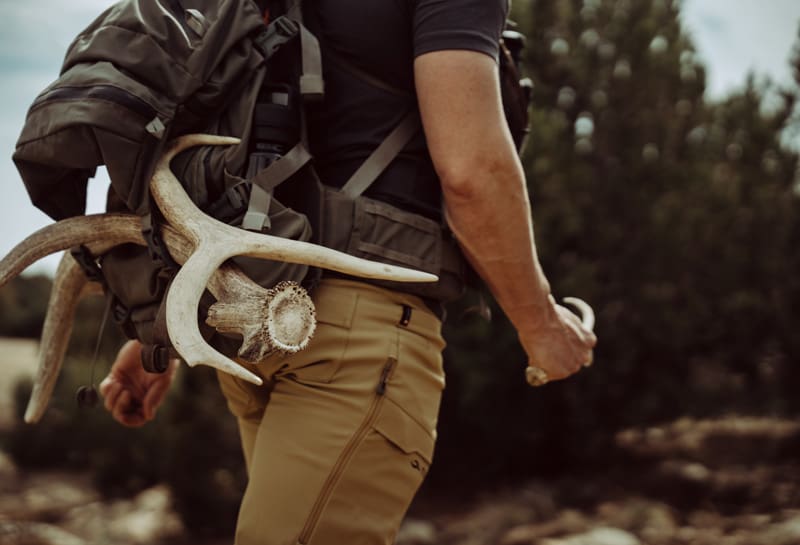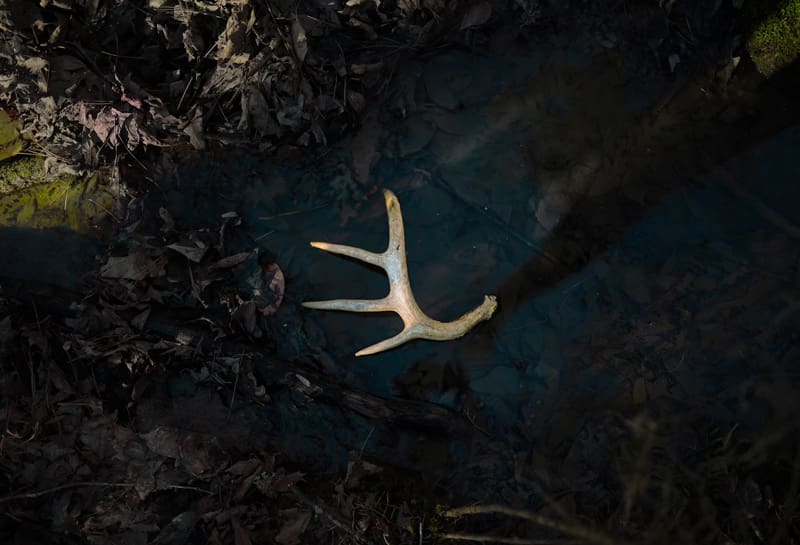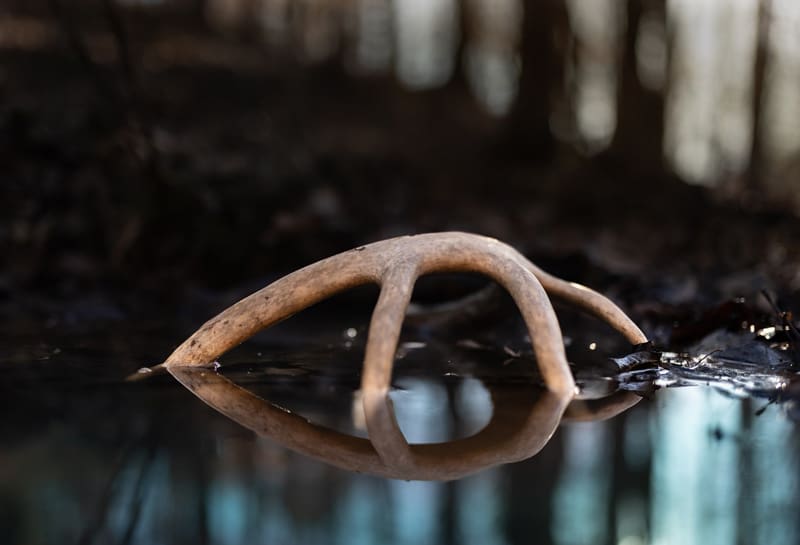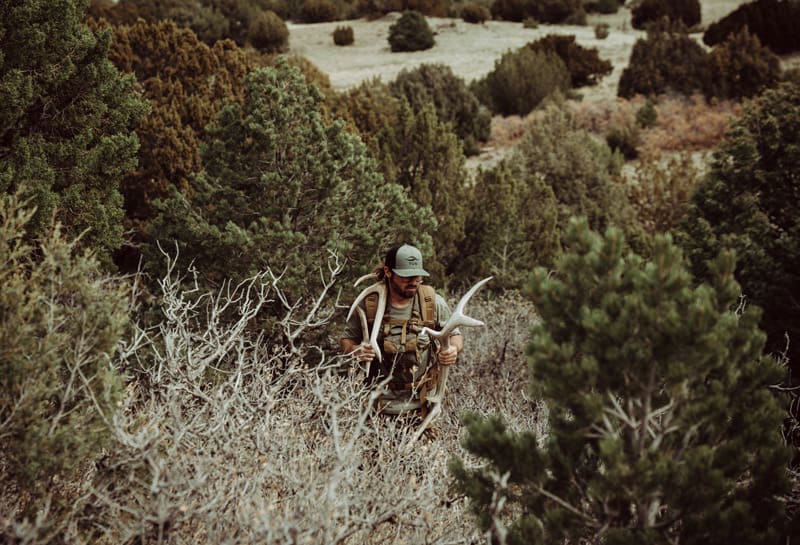Shed hunting, the hunt for shed ungulate antlers, has become increasingly popular among deer hunters. Many hunters find shed hunting to be an enjoyable and rewarding off-season activity that allows them to stay connected to the woods and continue their passion for hunting after deer season ends.
Finding shed antlers can provide valuable insights into the local deer population, including the size and quality of the bucks in the area. This information can be beneficial for planning future hunting strategies and managing deer populations. Furthermore, shed hunting enables hunters to venture into the woods in the off-season, offering a chance to remain active and engaged with their beloved outdoors.
For many hunters, shed hunting is not just about finding antlers, but also about the thrill of the hunt and the satisfaction of uncovering a hidden treasure. It can also be a great way for family and friends to spend time together in the outdoors while enjoying a shared interest in hunting.
What is shed hunting?
Shed hunting is the practice of searching for antlers that have been naturally shed by deer, elk, or moose (virtually anything with antlers). Shed antlers are also used in dog chews, knife handles, and other creative projects. Shed hunters typically search for antlers in areas where deer are known to frequent, such as feeding and bedding areas, and along trails and fence lines.
The popularity of shed hunting has been steadily growing, attracting hunters who are looking for a new way to enjoy the natural environment and potentially find valuable antlers. Many individuals and groups organize shed hunting expeditions and competitions, adding a social and competitive aspect to the activity. This increase in interest has prompted the development of shed antler hunting guides, workshops, and even dedicated hunting dogs trained to sniff out shed antlers.

Why would hunters look for shed antlers?
People hunt for shed antlers for a variety of reasons. Firstly, shed hunting provides an enjoyable outdoor activity in the deer hunting off-season. It allows us hunters to explore the wilderness and enjoy the thrill of the search even when hunting season has come to a close. Additionally, finding shed antlers can provide valuable information about animal behavior, including movement patterns, bedding areas, and the overall health of deer populations.
For deer hunters specifically, shed antlers offer the opportunity to track the growth of individual deer and gain insight into their potential size and age for future hunting seasons. By studying shed antlers, hunters can also gain valuable information about the local deer population, including population density and the overall health of the herd.
Shed hunting provides a rewarding and educational experience for hunters, as they gain valuable insight into animal behavior and the opportunity to track the growth of the deer population. This information is not only valuable for hunting purposes but also contributes to a greater understanding and appreciation of wildlife in their natural habitat.
Hunt Slow and Steady
When shed hunting, it’s important to take a slow and methodical approach to cover lots of ground effectively. Start by scanning every square foot of the ground, looking closely for shed antlers. It’s easy to miss them if you move too quickly or overlook certain areas.
Shed antlers can come in a variety of colors, including brown, white, or even a mossy green color. To spot them, pay attention to the surrounding environment and look for anything out of the ordinary. Antlers can blend in with the foliage, so be sure to look closely at any fallen branches, logs, or tall grass.
To cover a large area in a slow, methodical manner, start by establishing a grid pattern and combing through each section carefully. Keep an eye out for any signs of antler sheds, such as rub marks on trees or bedding areas where deer may have spent time.
By scanning every square foot of the ground and taking a slow, steady approach, you’ll increase your chances of finding shed antlers while enjoying the peaceful and methodical process of shed hunting.

Where to find shed antlers
During the winter, whitetails gather around areas with limited food sources to survive the harsh season. The best locations to search for places where whitetail bucks antlers are where these deer congregate. Look for areas where the majority of the whitetail population gathers, such as large agricultural fields, dense evergreen thickets, or sheltered valleys with ample browse. During the winter months, deer tend to herd up so this isn’t usually very difficult to figure out. These spots are ideal for finding shed antlers as the deer spend a significant amount of time there during the winter months. Apps like OnX and Google Earth are very helpful in getting you a start on where deer might be during the winter months.
Shed Hunt Where the Deer Are
One of the best places to find shed antlers is in agricultural fields. Shed hunting in ag fields, including soybean fields, corn stubble, and scrubby, overgrown fields, requires specific strategies for success. The best time to search for sheds is from January through March when deer congregate in the best food sources. In soybean fields, focus on areas where deer are likely to bed down and frequent, such as edges and corners. Look for sheds in corn stubble by carefully scanning the ground, as the sheds can easily blend in with the debris. In scrubby, overgrown fields, concentrate efforts around thickets and brushy areas where deer seek cover.
Maybe it goes without saying but it’s important to scout the area and look for signs of deer activity such as droppings, tracks, and worn trails. This will help you narrow down where to look. Additionally, using a dog trained to find sheds can significantly increase your chances of success. Carry a GPS or a map (OnX is a fantastic tool for this) to mark locations where sheds could be found.
It’s important to branch out and explore different lands to locate herds of whitetails and gain permission to shed hunt if necessary. This might involve reaching out to landowners or local hunting clubs to secure access to private lands where whitetails are known to be during the severe winter weather. It’s also essential to respect the land and its owners, following all regulations and leaving the area as you found it. Some states have laws around when and where you can shed hunt. Make sure to take the time to learn the regs in your area.
By focusing on areas where whitetails gather in the winter due to limited food sources and being willing to explore different lands to locate herds, shed hunters can increase their chances of finding shed antlers and enjoy a successful and rewarding shed-hunting experience.
Look in the Bedroom
Brushy, wooded staging areas are a great place to find antlers and are often found within 100 yards of old crop fields. These areas typically consist of dense brush and trees, providing cover for deer and other wildlife. These areas have low-hanging branches that will often help knock off fresh antlers.
To follow deer trails from these staging areas to nearby bedding areas, look for well-worn paths through the underbrush and follow them in the direction of heavily wooded areas or thick cover, which are characteristic of bedding areas. Look for depressions in the ground or flattened vegetation, which are indicative of deer beds.
When searching for the biggest sheds in thick cover and along multiple trails, focus on areas where deer are likely to travel between sanctuaries and nearby feed fields. Look for deer trails that link these areas and concentrate your search in areas with heavy deer traffic. Additionally, search near natural barriers such as creeks or ridges where deer may shed their antlers while maneuvering through challenging terrain. Pay attention to areas where deer are likely to pause, such as feeding or watering spots, where sheds are more likely to be dropped.

Get Wet
When identifying antlers in different weather conditions, it’s important to consider the ease of spotting brown or white antlers on overcast days, as well as the advantage of spotting shiny bone in light rain. On overcast days, the lack of harsh sunlight can make it easier to spot the contrast of brown or white antlers against the background. Additionally, in light rain, the moisture can cause antlers to appear shiny, making them easier to spot.
However, in harsh sunlight, the glare can make it difficult to pick out antlers from their surroundings. It’s important to use weather conditions to your advantage while searching for antlers. When searching for antlers, it’s best to plan your search during overcast days or in light rain to improve your chances of spotting them.
Conclusion
Shed hunting is a great way to spend time in the woods in the off-season. It’ll provide you with solid intel for deer hunting and ultimately give you an excuse to spend more time in the woods!
This information will get you started on your search but nothing beats boots-on-the-ground action in your own woods. Get out there and let us know what you find!
